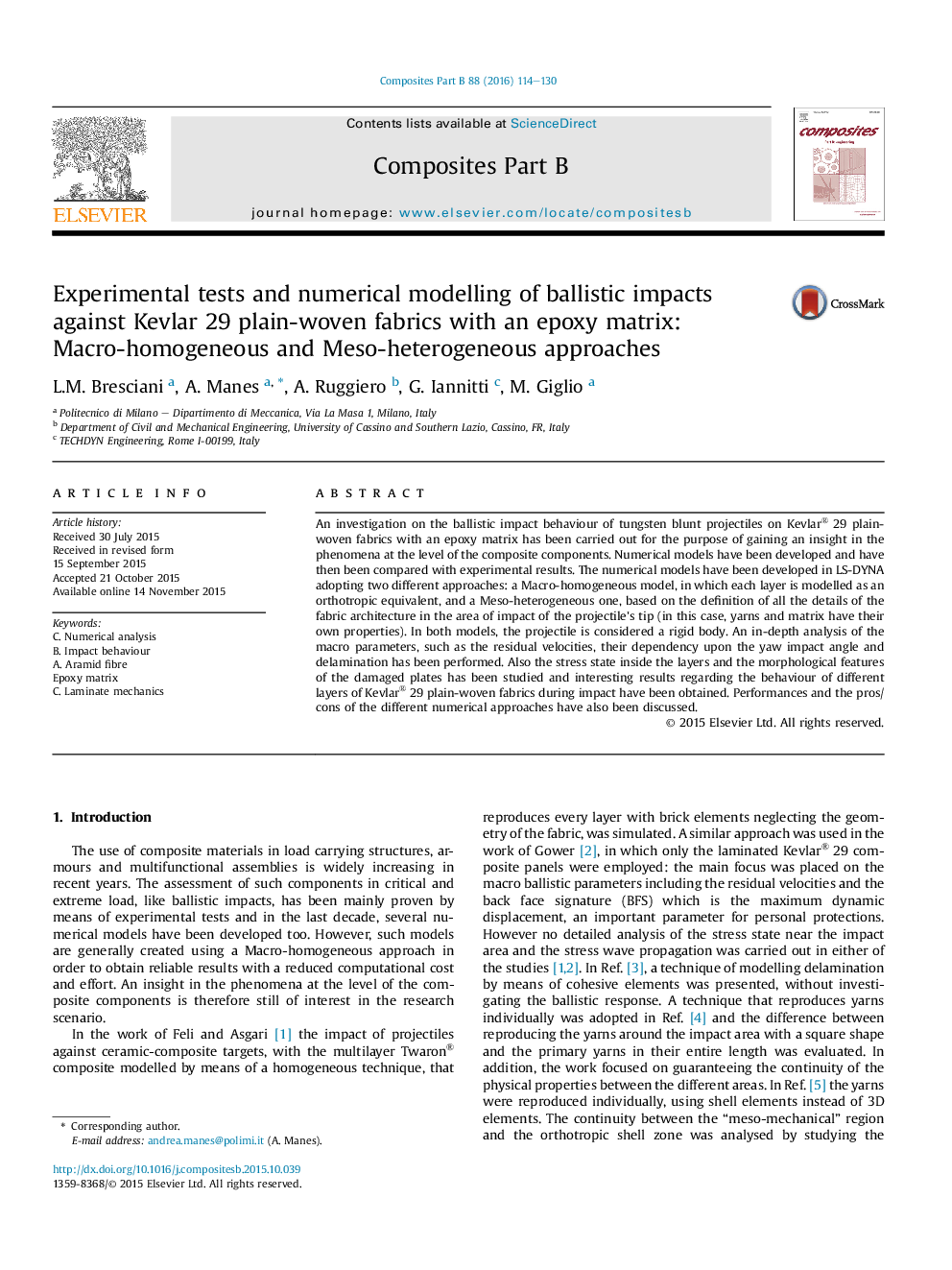| Article ID | Journal | Published Year | Pages | File Type |
|---|---|---|---|---|
| 7212979 | Composites Part B: Engineering | 2016 | 17 Pages |
Abstract
An investigation on the ballistic impact behaviour of tungsten blunt projectiles on Kevlar® 29 plain-woven fabrics with an epoxy matrix has been carried out for the purpose of gaining an insight in the phenomena at the level of the composite components. Numerical models have been developed and have then been compared with experimental results. The numerical models have been developed in LS-DYNA adopting two different approaches: a Macro-homogeneous model, in which each layer is modelled as an orthotropic equivalent, and a Meso-heterogeneous one, based on the definition of all the details of the fabric architecture in the area of impact of the projectile's tip (in this case, yarns and matrix have their own properties). In both models, the projectile is considered a rigid body. An in-depth analysis of the macro parameters, such as the residual velocities, their dependency upon the yaw impact angle and delamination has been performed. Also the stress state inside the layers and the morphological features of the damaged plates has been studied and interesting results regarding the behaviour of different layers of Kevlar® 29 plain-woven fabrics during impact have been obtained. Performances and the pros/cons of the different numerical approaches have also been discussed.
Related Topics
Physical Sciences and Engineering
Engineering
Engineering (General)
Authors
L.M. Bresciani, A. Manes, A. Ruggiero, G. Iannitti, M. Giglio,
